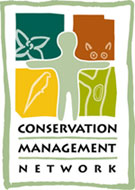What is a Conservation Management Network?
 A Conservation Management Network (CMN) is a network of remnants of native vegetation, their owners or managers and other interested individuals. CMNs usually focus on a single ecological community (e.g. grassy ecosystems), because the management needs of each community are relatively uniform. An important purpose of CMNs is to assist landholders and land managers in the management of remnants.
A Conservation Management Network (CMN) is a network of remnants of native vegetation, their owners or managers and other interested individuals. CMNs usually focus on a single ecological community (e.g. grassy ecosystems), because the management needs of each community are relatively uniform. An important purpose of CMNs is to assist landholders and land managers in the management of remnants.
CMNs are the only networks specifically focusing on remnant vegetation across a range of land tenures.
A CMN is managed by a coordinator whose role is to help landholders or managers learn about the ecosystem, and the fauna and flora in their remnants. The coordinator provides information to help land owners and managers work out the best way to manage each remnant, according to particular goals. Management goals may include both conservation and production.
The CMN coordinator promotes communication between members of the CMN through a newsletter. The CMN coordinator may also provide assistance with protection measures and sourcing of funds, and maintains a database of CMN sites. The CMN database stores information about all CMN sites. The remnants of a CMN are not controlled or purchased by a centralised agency. Rather the existing owners or managers are encouraged to join the CMN and continue to manage the remnants, either as they have been previously, or with an increasing focus on conservation.

The CMN logo represents remnants of an ecological community and the critical role that people now play in conserving such communities.
Each remnant may be significant for one or more reasons, for its birds, mammals, trees or understorey flora. While each remnant is important in its own right, it is only together that the remnants can adequately represent all of the different elements of the original ecological community.
With support from the CMN, people now help to link together remnants that were once part of a more continuous ecological community.
CMNs were the dream of botanists Suzanne Prober and Kevin Thiele and environmental economists Carl Binning and Mike Young. Kevin and Suzanne founded Australia’s first CMN to manage the grassy box woodlands that stretch from the Victorian border to Queensland.
» Biodiversity
» Social
Biodiversity objectives of CMNs
- to optimise conservation of the genetic and biological diversity of the ecological community;
- to maintain or enhance viable remnants of the ecological community throughout its distribution;
- to restore and re-create threatened ecological communities to a point where they are no longer threatened;
- to contribute to the maintenance of ecological processes and the dynamics of the ecological community in a landscape context; and
- to increase protection status
Grassy Box Woodlands once dominated millions of hectares on the fertile soils of NSW’s sheep-wheatbelt. They have now largely been cleared for agriculture, and are one of the most poorly conserved ecosystems in Australia. Remnants are widely scattered, often small, on multiple land tenures and rarely managed for conservation. Important representatives of Grassy Box Woodlands largely remain through chance. There is no certainty for conservation in the long term, as important sites are easily lost through clearing, increased grazing, weed invasion, inappropriate burning and urban develpoment. For ecological communities like Grassy Box Woodlands, the processes of ecological degradation are such that once certain thresholds of change are passed they are largely irreversible. The Grassy Box Woodlands CMN aims to co-ordinate the protection and ongoing management of remnants of grassy Box woodlands. It brings together sites and managers from across New South Wales. Each site has particular values and each manager has particular experiences that can contribute to the network. White Box - Yellow Box - Blakely's Red Gum Woodlands and Derived Native Grasslands are listed as a ‘critically endangered’ ecological community under the Environmental Protection and Biodiversity Conservation Act 1999, and as an endangered ecological community under the NSW Threatened Species Conservation Act.
Bega CMN, which formed in 2006 on the far south coast of NSW, has voluntary conservation contracts that cover 3,800 ha of endangered ecological communities such as Brogo Wet Vine Forest and Dry Rainforest, Floodplain Wetlands and Coastal Saltmarsh.
- to enhance community ownership and encourage ownership of the local environment
The Broken-Boosey CMN was established in 2002 under the Box-Ironbark program in north-west Victoria and covers an area of about 5,000km2. “The CMN is best known around the community for its coordinated fox control program for the protection of the endangered Bush Stone-curlew,” says facilitator Toni Kubeil. “Over the four years of the trial contact has been made with more than 450 landowners who now all receive the CMN quarterly newsletter ‘Call of the Curlew’. The CMN has been able to create cultural change in several community groups: the creation of a ‘baiting culture’ has resulted from the coordinated fox control, increasing the numbers of landowners baiting from 4 to 120 in 2006. After two fox baiting programs over 18 months the numbers of foxes had reduced from 30 to 4 along a 180km spotlighting transect.”
- to provide a network for managers
The Monaro used to contain some 250,000 ha of 'upland' Natural Temperate Grasslands. Little now remains of this ecological community and it is now listed under the EPBC Act. The Monaro Grasslands CMN brings together 60 private land owners and a total of over 6,000 ha of vegetation and over 40 public land areas, with a total of 1000 ha.
- to integrate conservation into management by empowerment with knowledge and resources
The Gippsland Plains CMN was founded in 2001 and covers about 70,000 ha, known locally as the Red Gum Plains, in East Gippsland where only 10 per cent of the estimated pre-1750 native vegetation remains. There is little or no research about how to restore the depleted understorey of the ecological communities in this agricultural landscape. The CMN decided to conduct some of its own trials with input from scientists. Preliminary results from burning trials suggest there has been little or no recruitment after fire suggesting the seedbank supply of some shrubby species had been exhausted. Fencing exclusion trials have shown that browsing by native and non-native animals is also a problem. Planting or direct seeding and excluding grazers may now be the only way to re-introduce those species. This information is communicated through the network via a quarterly newsletter “On the plains” which is sent to over 200 public and private land managers.
- to share knowledge between landholders, scientists and conservation planners and managers
The Grassy Box Woodland CMN currently communicates with 700 members, 400 of whom are private land managers, through the network newsletter Woodland Wanderings, an e-mail discussion group. Scientific trial results are regularly reported on in the newsletter.
Across Australia
Currently (2010) there are 11 CMNs operating in Australia.
In Victoria there are currently (2009) 7 CMN’s.
In NSW there are currently (2009) 4 CMN's:
Grassy Box Woodlands
Southern Tablelands
Monaro Grasslands
» Woodlands videos & resources

